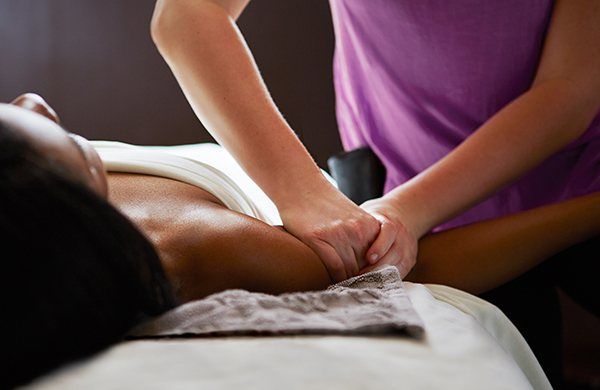15 FAQ about Panchakarma cleansing therapy
In this article, we cover the different questions about Panchakarma cleansing therapy in Ayurveda / Herbal medicinal techniques. It includes 15 questions which people have searched on google mostly.
1. What is Panchakarma?
Panchakarma, as the name suggests, it constitutes of five main therapeutic techniques that are used for the detoxification of the body toxins. It is composed of two words “Pancha” and “karma”. Here, “Pancha” means five in number and “karma” means the techniques. Panchakarma cleansing therapy is the best way to detoxify your body which was mentioned in the ancient texts and practiced before hundreds of years in the country of Himalayas.
2. What are the procedures under Panchakarma ?
There are five main procedures under Panchakarma cleansing therapy. They are:
-
- Vamana (emesis)
- Virechana (purgation)
- Vasti (enema)
- Nasya (nasal enema/irrigation)
- Raktamokshan (blood letting therapy)
3. What is the main purpose of Panchakarma ?
Panchakarma falls under the sodhana chikitsa (purifying/detoxifying treatment) in Ayurveda. It’s main uses are:
-
- To eliminate the bodily toxins.
- To prevent diseases by enhancing the non-specific immunity against all diseases.
- To treat diseased patients with various purificatory procedures.
- To restore normal physiology and reverse pathology by the way of biological purification.
- To enhance the efficacy of drugs in the body.
- To reduce the possibility of recurrence of diseases.
4. Why is Panchakarma important?
Panchakarma cleansing therapy is important because, it:
-
- Removes the root cause of the disease.
- Balances body humors i.e. Vata, Pitta and Kapha.
- Improves immunity.
- Balances the different bodily systems and physiological equilibrium.
- Removes toxins.
- Increases mental and physical efficiency.
- Increases skin glow.
- Reduces extra fat.
- Treats insomnia, anxiety and mental problems.
- Increases joint mobility.
- Increases vigour and stamina.
5. Do body massage and steam bath fall under Panchakarma?
No, they do not fall under Panchakarma. Rather, they are the pre-operative procedures that need to be performed before going through Panchakarma
6. Can all Panchakarma procedures can be done at the same time?
No, all the procuders under Panchakarma cleansing therapy cannot be performed at the same time or at very less time gap. They should performed under specific time gap and with diet and habit disciplines. Minimum 7 days gap should be maintained in between performing emesis and purgation.
7. What are the eight major things that needed to be avoided during Panchakarma cleansing therapy?
They are:
-
- Uchchai bhaasyam (speaking at loud voice)
- Ratha kshobha (Travelling in the uncomfortable vehicles)
- Ati chankraman (Walking excessively)
- Atyaasana (Excessive sitting at one posture)
- Ajeernadhyasana (Taking food before the digestion of previously taken food)
- Vishamashana (Taking inappropriate foods, apart from the recommendation of doctor)
- Diwaswapna (Daytime sleep)
- Vyavaaya (Indulge in sexual activities)
8. What are the diseases that can be managed by the means of Panchakarma ?
The various diseases that can be managed by Panchakarma cleansing therapy are as follows:
-
-
- Life style disorders
- Diabetes mellitus
- Obesity
- Hypertension
- Depression
- Mental illness
- Impotency
- Spondylitis, arthritis
- Eye diseases
- Skin diseases
- Neurological diseases (Paralysis, Migraine, Lower back pain)
- Gynecological disorders
- Digestive problems, etc.
-
9. Are Panchakarma cleansing therapies done according to the seasons?
Yes, Panchakarma cleansing therapy are done according to the seasons also. In specific seasons, the specific body dosha is vitiated, so in order to pacify the specific dosha, they are performed in specific season.
E.g. Emesis is preferred in Spring season (March/April – April-May).
Purgation is preferred in Autumn season (Sept/Oct – Oct/Nov).
Enema is preferred in the Summer season (May/June – June/July).
10. What type of people are eligible for Panchakarma?
-
- Mentally strong
- Who can tolerate physical pain
- Young
- Who have done pre-operative procedures i.e. oleation (massage) and fomentation (steam)
- Specific disease to the specific procedure.
11. What type of people are not eligible for Panchakarma cleansing therapy?
-
- Injured
- Very old age
- Child
- Pregnant ladies
- Physically and mentally weak
- After excessive physical exertion
- After sexual intercourse
12. Is Panchakarma beneficial for infertility?
Yes, Panchakarma can be useful in case of infertility. After Panchakarma, Vajikarana (Aphrodisiac) treatment can be done that helps for infertility. It cannot be done without Panchakarma.
13. What are the signs that indicate your Panchakarma cleansing therapy was done in an appropriate way?
-
- Lightness of the body.
- Mentally cheerful.
- Minimum pain during the procedure.
- Improvement in the digestive capacity.
- Well-functioning of the sense organs.
- Proper elimination of the excreta.
14. What are the common misconceptions regarding Panchakarma?
-
- Massage, steam, spa, sauna, etc. are the Panchakarma techniques.
- All five techniques should be performed for a single individual.
- Panchakarma is different from Ayurveda.
- Panchakarma is only for chronic diseases.
- Panchakarma is free of side effects.
- Panchakarma belongs to Kerala.
15. Does one need to follow specific diet plan during Panchakarma cleansing therapy?
-
- Yes, one needs to follow the specific diet and habit plan as prescribed by the doctor. The plans are categorized as pre-operative, operative and post-operative. These diet plans help to make the Panchakarma cleansing therapy more effective and fruitful.
